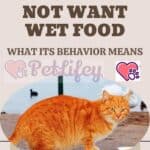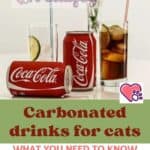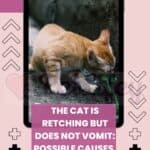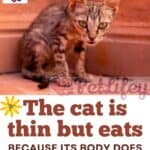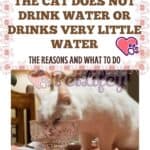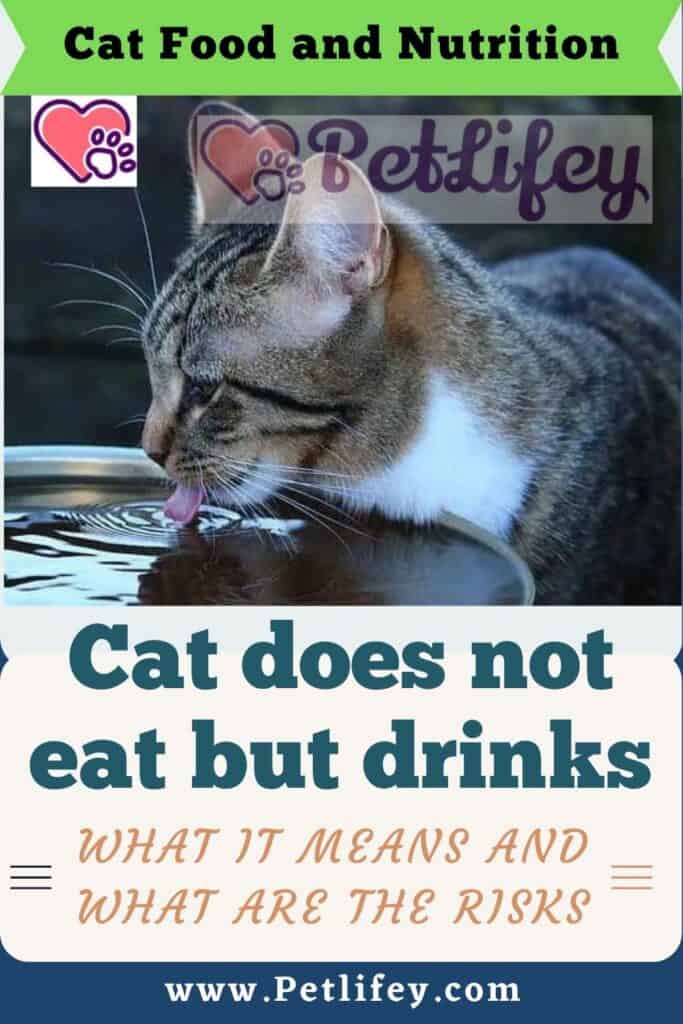
Does your kitty refuse food but stick to the water bowl? All the causes and risks if the cat does not eat but drinks and what to do to help him.
The eating habits of our domestic feline can sometimes be really particular: there are those who eat too much, those who eat too little and who instead do not eat at all and it seems that the food almost does not interest them. In fact, if our cat does not eat but drinks, he could have some health problem or discomfort that prevents him from having a regular diet: let’s see what are all the causes, risks and possible remedies.
Change of feline habits: something is wrong
Not only is it important to know and observe your cat’s behaviors every day but above all to note when and if there are small changes in her daily routine. In fact, the cat is among the most habitual animals that there are and even small variations in its habits can have serious repercussions on its health and change some of its usual behaviors.
It is therefore an animal that tends to repeat the same activities every day and (possibly) always at the same time. It is the owner’s job to always keep his food and water bowl full but also to check that there is no ‘strangeness’ in his physiological functions.
When we notice that something is different, we do not underestimate the problem and, if it recurs over the course of the days, it is better to take the feline to visit our trusted veterinarian, before the problems can have serious consequences.
Because the cat does not eat but drinks
Among the most important changes that the cat can make (voluntarily or not) to its habits, the most serious ones concern its nutrition. A cat that refuses to eat but needs to hydrate itself and therefore to drink, must put us on alert.
But what would push a cat to give up, even with too much effort, to its own nourishment?Evidently he is not hungry: but what does it depend on? The factors can be different but among these the most frequent are:
- temperature changes,
- kidney failure,
- changes in your diet,
- gastrointestinal problems.
Change of season
Just as it can happen for us human beings, even the cat in summer, with the increase in temperatures, with the sultry heat and the impossibility of enjoying fresh and airy spaces, could have a strong decrease in appetite and at the same time a noticeable increase in thirst.
This happens because, with the heat, the body’s caloric needs decrease compared to the winter months or when temperatures drop anyway. But when the cat sweats and releases fluids, it will need to hydrate more and therefore drink.
Kidney failure
In reality this could be a consequence of feline dehydration, and is however linked to a malfunction of the kidney system. Renal failure in cats can be acute or chronic, and involves an increase in toxins which, not expelled from the body, accumulate in the blood and remain in the circulatory system. There are some cat breeds that are particularly predisposed to this type of problem, including: Himalayan, Persian, Oriental, Siamese and Abyssinian.
Power change
Have we thought of making small changes to our cat’s menu, perhaps offering him something tastier and more substantial or buying cheaper but economically convenient food? In one case or another, changing the diet of our cat is not always a good idea and it is especially not doing it suddenly.
If the cat is used to a certain type of food (perhaps because we have switched from dry to wet food ) but above all at well-defined times and doses, he may feel so uncomfortable even to give up his meal.
Pancreatitis and other problems
Also in this case, they can be the triggers of the fact that the cat disdains the food bowl but strongly feels the need to drink water. Only a thorough check by the veterinarian and some tests can exclude the presence of pancreatitis in the cat, but also infections and other gastro-intestinal problems.
The cat does not eat but drinks: what to do
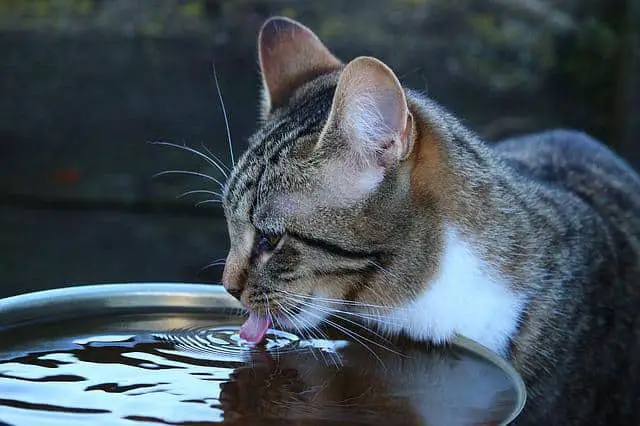
Are we disheartened because our cat continues not to ingest food and continues to hydrate itself? If more and more often we see the food bowl full and the water bowl empty, then we must run for cover. Unless we realize that the cause is related to a change in his diet, we must seek the advice of our trusted veterinarian. It will be the expert to evaluate if it is appropriate to subject the feline to blood and urine tests, and then adopt a possible therapy.

